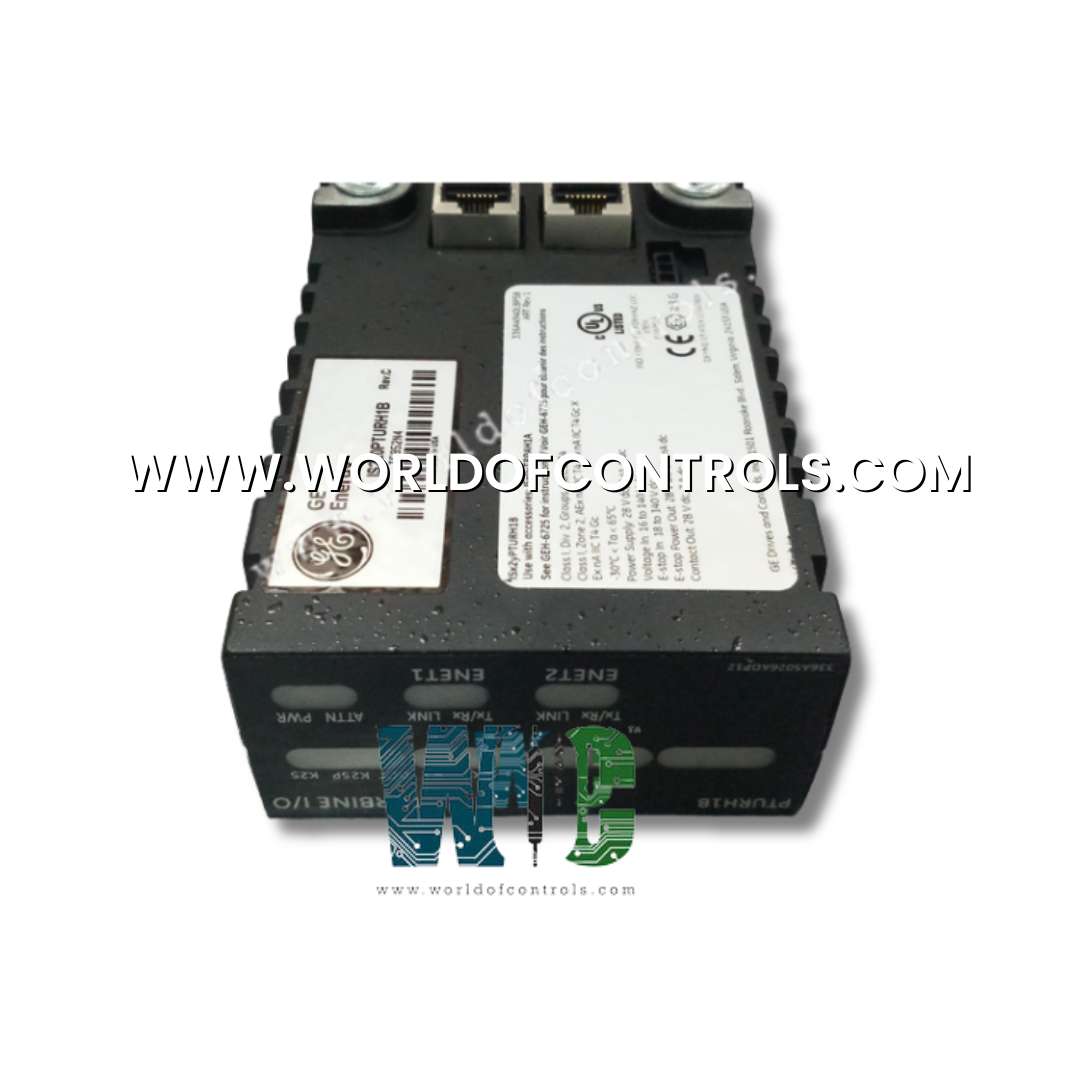
World Of Controls understands the criticality of your requirement and works towards reducing the lead time as much as possible.
IS220PTURH1B, REV B - Primary Turbine Protection I/O Module is available in stock which ships the same day.
IS220PTURH1B, REV B - Primary Turbine Protection I/O Module comes in UNUSED as well as REBUILT condition.
To avail our best deals for IS220PTURH1B, REV B - Primary Turbine Protection I/O Module, contact us and we will get back to you within 24 hours.
SPECIFICATIONS:
Part Number: IS220PTURH1B, REV B
Manufacturer: General Electric
Series: Mark VIe
Product Type: Primary Turbine Protection I/O Module
Number of inputs: 4
Number of outputs: Automatic synchronizing control to main breaker
Number of Breakers Supported: 2
Speed Sensor Range: MPU pulse rate range 2 Hz to 20 kHz
Input Voltage Range: 70 – 120 V
Speed sensor input circuit sensitivity: 27 mV pk
Analog Outputs: 0-20 mA, up to 900 Ohms
Slip Range Supported: ±3 Hz max
Contact voltage sensing: 20 V dc
Operating Temperature Range: -40°C to +70°C
Technology: Surface mount
Size: 8.26 cm High x 4.19 cm
Availability: In Stock
Country of Origin: USA
Manual: GEH-6721D
FUNCTIONAL DESCRIPTION:
IS220PTURH1B, REV B is a Primary Turbine Protection I/O Module manufactured and designed by General Electric as part of the Mark VIe Series used in Distributed Turbine Control Systems. The PTUR pack serves as the electrical interface between one or two I/O Ethernet networks and a turbine control terminal board. It includes a common processor board used across all Mark VIe™ distributed I/O packs, a turbine control–specific board, and an analog acquisition daughterboard. The PTUR pack connects to the TTURH1C terminal board, supporting:
Connections are made through dual RJ45 Ethernet ports for input, a three-pin power connector, and a DC-62 pin output connector that interfaces directly with the terminal board. The pack also features LED status indicators for visual diagnostics and an infrared port for local diagnostic serial communications.
As an alternative, up to three PTUR packs can be plugged directly into a TRPAH1A terminal board. In this setup, each PTUR handles four speed inputs, or the first four inputs may be distributed across all three PTURs. The TRPA board also provides two solid-state primary trip relays. However, this configuration does not support bus and generator voltage inputs, shaft voltage/current signals, flame sensors, or main breaker outputs. For further details, refer to the TRPAH1A documentation.
COMPATIBILITY:
The PTURH1B pack is designed for use with specific turbine terminal boards within the Mark VIe system. It provides reliable compatibility with the TTURH1C turbine terminal board and the STUR board, ensuring proper functionality and signal processing for turbine control applications. However, the PTURH1A is not compatible with the DIN rail–mounted DTUR or with any other TTUR board versions. This distinction is important when planning system configurations, as incorrect pairing can result in limited functionality or lack of support for critical input/output signals.
INSTALLATION:
OPERATIONS:
The processor board inside the PTUR pack is a standardized component used across all Mark VIe Ethernet I/O packs, ensuring consistency, reliability, and ease of integration within the control system. While the function-specific boards and daughterboards vary between different I/O packs, the processor board remains common, providing the core computing and communication capabilities. The processor board includes the following key features and components:
ANALOG INPUT HARDWARE:
In a simplex configuration, the PTUR pack can process up to four pulse rate signals for turbine speed measurement. The necessary conversion circuits that translate pulse rate into digital speed signals are built into the PTUR pack. Additionally, generator and bus voltages are routed into the PTUR to enable automatic synchronizing in coordination with the turbine controller and the GE excitation system. The TTUR terminal board provides permissive generator synchronizing relays and manages the main breaker relay coil (52G).
In a TMR configuration, each PTUR pack (R, S, and T) receives its own dedicated set of four speed inputs, ensuring redundancy and reliability. All other input signals are distributed (fanned) to all three PTUR packs. Control signals from the R, S, and T packs are then voted before activating the permissive relays (K25 and K25P). The K25A relay is controlled by the I/O controller and TREG boards. For safety and reliability, all three relays include two normally open contacts connected in series with the breaker's close coil, ensuring proper protection logic is enforced.
WOC offers one of the largest and most reliable stocks of OEM replacement parts for GE Distributed Control Systems, ensuring that customers have access to critical components whenever needed. In addition to supplying a wide range of unused and rebuilt boards each backed by a warranty for peace of mind, we also provide professional repair services for faulty boards, helping extend the life and performance of your existing equipment. Our team of experts, available 24/7, is committed to delivering prompt technical support and tailored solutions to meet diverse automation requirements, from troubleshooting to complete system maintenance. With a strong focus on quality, availability, and customer satisfaction, WOC stands as a trusted partner for OEM parts, repairs, and automation support. For pricing details and product availability, our team can be reached easily via phone or email.
What types of signals does the PTUR module handle?
It accepts pulse rate signals from speed sensors, generator and bus voltages, shaft voltage and current measurements, and flame sensor inputs. The module converts analog and pulse signals into digital form for turbine control logic. Main breaker control signals are also managed by the PTUR.
How is the PTUR module connected?
Input connections are via dual RJ45 Ethernet ports for network redundancy and a three-pin power connector. Output connections use a DC62-pin connector interfacing directly with the terminal board. The module supports both simplex and TMR configurations.
What terminal boards are compatible with PTUR modules?
PTUR modules are compatible with TTURH1C and STUR terminal boards. They are not supported on DIN rail-mounted DTUR boards or other TTUR variants.